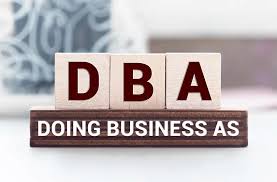Where you bank is more important than you might think. Local banks are essential to their neighborhoods. Most regional banks were set up to serve customers like farmers, small businesses, and local families that national banks often don’t care about. Here are the best local bank in USA along with the pros and cons of local banks.
What is a Local Bank?
A local bank is any size (large or small) locally owned and operated depository institution. Local banks regularly concentrate their services and efforts on the locals and their companies. This partnership benefits community banks as well as the communities they serve. Local banks also provide important services to families, small business owners, and those establishing or reestablishing credit in your community who are neglected by mega banks.
How Does Local Bank Work?
A local bank should take into account your unique financial situation. Hence, because each bank has unique traits, choosing the ideal local bank for your needs is crucial. Finding the right local bank is important, no matter if you want a lot of ATMs or a higher rate on your savings.
How to Decide on a New Local Bank
To open a local bank account in the best way possible, abide by the following suggestions.
#1. Select the Proper Account
It is difficult to compare the numerous products and services provided by local banks at the same time. A fantastic place to start is by matching the proper account types to your needs and goals in terms of money. A bigger, more reputable bank with a range of possibilities can be your best choice if you want to change checking accounts. You can also open a high-yield checking account, which is something that many online banks and credit unions offer.
#2. Look For Local Banks That Have Low or No Fees
When there are other banks that offer negligible or no fees, there is no incentive to keep using one that charges unwarranted fees. Online banks are known for their low fees. Most of the time, they don’t charge as many fees as traditional brick-and-mortar banks because they have fewer branches or none at all. Some holders of online bank cards might even be able to use specific ATMs for free.
Many banks, especially big ones like Citibank and Bank of America, are trying to get rid of or drastically cut their overdraft fees. Thus, consider this if the banks you’re looking into have adopted more lenient overdraft policies in line with this trend.
#3. Consider the Worth of a Bank Branch
The accessibility of banking is another crucial factor. According to Paul McAdam, senior director of banking and payment services at J.D. Power, accessibility to ATMs and branch locations, as well as the availability of online and mobile banking, are crucial variables.
In otherwords, your priorities for particular conveniences may differ depending on what you’re used to. Customers who are used to doing much of their business online might prefer the convenience of online banking resources to branch locations. The opposite can be true for people who are more accustomed to branch banking.
#4. Investigate Credit Unions
Even though individuals are more accustomed to large banks, credit unions should also be considered. Credit unions are member-owned, non-profit organizations. Lower fees, greater savings rates, and lower borrowing rates are common examples of how members receive a profit-sharing dividend.
#5. Locate a Bank That Supports Your Lifestyle
The bank you select should be able to meet your needs. If you’re self-employed, for instance, you’ll need a bank that can support you as you grow your business. Consider your spending patterns while selecting a bank. Utilize the budgeting tools that many banks have incorporated into their websites and mobile applications to control your expenses and understand where your money is going.
#6. View the Available Digital Tools
Typically, consumers can use an app or website to deposit checks, check balances, pay bills, and transfer money. Modern digital services aren’t offered by all banks, though. Some features that consumers are requesting more frequently are not offered by all banks, such as the ability to lock a debit card (and prevent someone else from using it) or manage mobile banking alerts. Since not all online banks have apps for smartphones, you may have to use a mobile browser to get to your account.
#7. Recognize the Laws and Regulations
The account agreement often has important information about a bank account. This agreement is often available elsewhere on the bank’s website, but it may not be on the main page of the account. It is best to carefully read the disclaimer to avoid overlooking anything. Also, check to see if the Federal Deposit Insurance Corporation or the National Credit Union Administration will protect your savings if your bank goes out of business.
When you compare products, be on the lookout for deals that are about to expire. Some banks may provide alluring teaser rates before later lowering to a considerably lower rate.
#8. Read Reviews of the Banks You Are Considering
After you’ve started comparing a few banks, reading evaluations that have been published about them by experts in the sector can help you understand more about the financial institution, its products, and its customer service. Customer testimonials are extremely important, particularly because many clients choose to stick with their banks for a long time.
Best Local Bank
In the US, there are thousands of possibilities for business checking accounts at more than 4,500 commercial banks. Who among the time-constrained business owners has the time to plan everything? Have a look at the list of the top small business banks below.
#1. Wells Fargo Initiate Business Checking
Up to $5,000 in free cash deposits and 100 free transactions are permitted with this business bank account each fee period. If a daily sum of $500 is paid, the $10 monthly service fee for this account will be waived. This option is fantastic for small firms with limited cash flow activities because of the cheap starting deposit amount of $25. The Wells Fargo Initiate Business Checking account is the most user-friendly while still providing fraud detection and zero-liability debit card security. Small business owners can open a Wells Fargo business checking account by filling out an online form or going to a branch. They will then need to bring in the required deposits and paperwork.
#2. BlueVine Business
Small businesses with a sizable customer base will find BlueVine’s business checking account quite tempting. BlueVine is different from larger banks in that you can do as many transactions as you want and there are no monthly service fees or minimum balance requirements. Additionally, account holders can use any of the 37,000 MoneyPass ATMs located all across the nation without paying any fees. BlueVine does not impose overdraft fees, giving you some peace of mind. On accounts up to $100,000, small business owners can also get 2.0% interest, which is 50 times the national average. You may integrate your BlueVine business checking account with payment processors like Venmo and Square or accounting software like QuickBooks to further streamline banking.
#3. Bank of America Business Advantage Checking
When you use Business Advantage Savings, there are no fees for stop payments, wire transfers that come in, or electronic deposits. Furthermore, you can receive up to 500 transactions per month. Other adaptable methods of avoiding fees exist, such as using a business credit card or keeping a credit balance of $15,000 per month, even though they are fairly expensive at $29.95 per cycle. Payroll and merchant services are also provided by Bank of America.
#4. U.S. Bank Gold Business Checking Package
You may control cash flow by using U.S. Bank’s Gold Business Checking Package, which offers 300 free transactions and $10,000 in cash deposits per statement cycle. Small business owners can also get a discount of 50% on the first $100 in checks they cash. To make it simple for you to open a new business account, U.S. Bank provides several services, such as an EZ-Switch Kit, fraud detection, and overdraft protection. Additionally, you may manage all of your ACH, wire, and check accounts in one location with U.S. Bank’s SinglePoint Essentials.
#5. PNC Business Checking
This competitive account has a computerized cash flow platform that helps you keep track of your business finances. For the first three months, there is no monthly account maintenance fee, so it may be a good choice if you need a checking account but don’t expect to make many transactions (150 or less per month). Keep an average monthly balance of $500 so you don’t have to pay the $12 monthly fee once it starts.
Also see: BEST BANK FOR SMALL BUSINESS IN 2023
Local Bank in USA
Below is the local bank which can be found in USA:
#1. 1st Source Bank Limited
Customers in USA have received prompt and courteous banking services from this local bank since the company’s founding in South Bend, Indiana, in 1863. When you work with 1st Source, you can count on them to pay attention to you, understand your needs, and always act in your best interests.
This local bank continues to operate regional branches in northern Indiana and southwest Michigan, making it the largest locally owned and operated financial institution in USA. 1st Source has 75 banking facilities in 17 counties with $4.37 billion in assets, 8 offices for trust and wealth management, 8 for insurance, and 23 locations for the bank’s specialty finance group. They offer a vast array of financial services and exceptionally specialized attention to our clients—individuals and enterprises. Their objective is to help their clients realize their dreams of riches, stability, and happiness.
#2. Adams Bank & Trust Limited
Adams Bank & Trust is a full-service financial institution with offices in Nebraska and Colorado. The bank was established in 1916 and now has 15 offices and $500 million in assets. Ten of these offices are in Nebraska, and five are in Colorado. Todd Adams is the CEO, while Chad Adams is the president. Relationship-based banking is what the bank enjoys providing to its customers. We believe that your family’s financial situation is as good as ours. They have some of the best financial deals in the banking industry right now, and their customer service is unbeatable.
#3. Alliance Bank Limited
Alliance Bank is the only privately owned bank in Culver City. It was founded in 1980 to give small to medium-sized businesses, executives, and professionals in Southern California the specialized “relationship banking” they needed. Personalized banking is what they deliver, as opposed to other local banks (including another local bank in USA) that make pretentious claims. Since then, Alliance has grown to become one of the top 12 percent SBA lenders in Southern California, one of the top syndicators of construction loans in the state, and one of the fastest-growing commercial banks.
#4. American Airlines Federal Credit Union
In 1936, a group of American Airlines staff members banded together for mutual aid and founded a member-only cooperative banking institution. Both the membership and revenue of AA Credit Union have grown consistently over the more than 75 years that it has been offering financial services to the aviation industry. The company’s current $5.57 billion in assets and $578.6 million in net worth.
The AA Credit Union has more than 240,000 members and more than 40 branches in or near major airports in around 20 US cities and Puerto Rico. It also provides retail financial services in addition to standard banking services, including checking and savings accounts, credit cards, loans, and investment management. This local bank, situated in USA, also built more than 6,600 shared sites and 30,000 ATMs. It also offers mortgage loans, credit lines for small businesses, and loans for cars, machinery, and homes. The National Credit Union Share Insurance Fund (NCUSIF) insures deposits made to the independent company AA Credit Union up to a maximum of $250,000 per depositor.
#5. Bank of America
The Bank of America Corporation, a top global provider of banking and financial services, is headquartered in Charlotte, North Carolina. This local bank is the second-largest bank holding company in USA in terms of assets. Bank of America Corporation (also known as “Bank of America”) is a financial company that was founded on July 31, 1998. It offers banking, asset management, investing, and other financial and risk management products and services to small and middle-market businesses, as well as to individuals, organizations, and governments. Consumer & Business Banking, Consumer Real Estate Services, Global Markets, Global Banking, and Global Wealth & Investment Management are the company’s five business segments, which provide a range of banking and nonbanking services and products both domestically and internationally.
What Is the Best Local Bank in USA?
They include:
- U.S. Bank.
- PNC Bank.
- Truist Bank.
- Goldman Sachs.
- Chase Bank.
- Bank of America.
- Citibank.
- Wells Fargo.
Pros and Cons of Local Banks
To cut expenses, local banks are consolidating their organizational structures and concentrating on their core skills as opposed to attempting to be the best at everything. Given the growth of the financial technology, or “fintech,” sector, startups, and online banking businesses that try to take advantage of flaws in important financial institutions. It is obvious that the banking system needs to be updated. Discover the pros and cons of local banks to help you choose the best financial institution for your assets.
Pros of Local Banks
While doing your banking with a corporation that has physical facilities may seem old or too conventional, there are some benefits to doing so. You can decide if a bank is a good option for managing and holding your money by looking at its advantages:
#1. More Options
Most large financial institutions can offer all of these services in one place, whether you desire a personal savings or checking account, trust fund, certificate of deposit, Roth IRA, or corporate checking account. A few conventional banks also provide wealth management and investing services.
#2. Convenience
There are free ATMs and physical locations all around the country thanks to reputable financial institutions like Chase, Wells Fargo, and Bank of America.
#3. A Synthesis of the Two Worlds
Many banks give their clients the choice of making a cash deposit in person at a branch or sending money via a smartphone. For instance, one way Chase Bank competes with fintech solutions like Venmo and Square Cash is through QuickPay, a free online tool that enables users to send and receive money via email. Your only option with internet banks is an electronic transfer.
#4. Currency Exchange
Cash is still a common payment method that has to be regulated by the industry despite all the advancements in fintech. A traditional bank is a desired and sensible choice for banking customers who frequently handle cash.
Cons for Local Banks
Banks can be quite advantageous, but they can also be problematic. Hence, to decide whether a traditional bank is the best option for your financial needs, consider some of the cons of working with a larger institution:
#1. Lacking or Showing Little Interest
Savings account interest rates are notoriously lower at physical banks than at online ones. According to a recent GOBankingRates survey, the top five highest interest rates were offered by MySavingsDirect, Ally Bank, Barclays, iGObanking, and CIT. The greatest savings accounts were all with online banks.
#2. Wide Range of Fees
Bank fees may come to mind when you think of a normal bank. For instance, Alliant Credit Union, one of the biggest publicly accessible credit unions, charges only $25 as opposed to Bank of America’s $35 nonsufficient funds fee.
#3. Inadequate Client Service
One of the main problems with local banks is that they don’t understand their clients’ demands and don’t offer individualized care. The four megabanks, Bank of America, Chase, Citibank, and Wells Fargo, which together account for nearly 40% of all commercial bank assets in the United States, fared the poorest in the poll when it came to customer satisfaction. Smaller demographics might make it easier for smaller financial institutions to comprehend their customers’ banking needs and preferences.
How Do I Find a Small Local Bank?
- Choose the appropriate account.
- Seek out banks with minimal or no costs.
- Think about the ease of a bank branch.
- Look into credit unions
- Find a bank that accommodates your way of life.
- Check out the digital features.
- Be aware of the terms and limitations.
- Review the banks you are thinking about.
How Safe Are Local Banks?
As long as they are federally insured, local banks are a secure option for banking. The FDIC insures banks, while the NCUA insures credit unions. This implies that money deposited into your account will be secure even if a bank or credit union collapses.
What Is the Easiest Bank to Open?
Simplest Ways to Open a Bank Account Online are:
- Bank Ally.
- Juno.
- Synchrony.
- Current.
- Wells Fargo.
- United Bank.
- Axos Bank.
- Wise.
What Is the Easiest Bank to Get Into?
Probably the simplest to join is Chime. New members only need to submit their first and last name, email address, and Social Security number when they go online.
Why Do People Use Small Banks?
On average, smaller banks give customers greater interest rates on checking, savings, and certificate of deposit accounts. Additionally, smaller institutions offer better terms on small company loans and credit cards. Smaller banks have cheaper overdraft costs and lower balance requirements.
Which Bank Has No Monthly Fee?
A checking account without a minimum initial deposit or a monthly maintenance cost is available from Ally Bank. Additionally, it offers 0.25 percent APY with a minimum daily amount of $15,000 and 0.1 percent APY on balances under $15,000.
References
- bankinfousa.com
- reviewjournal.com
- bankrate.com
- architecturaldigest.com






